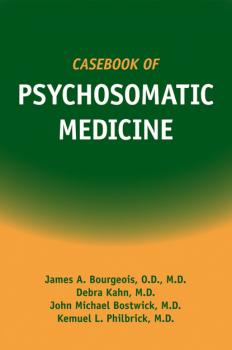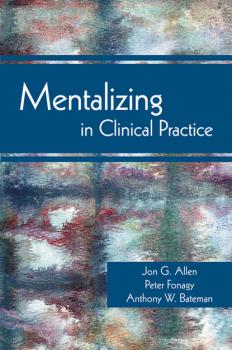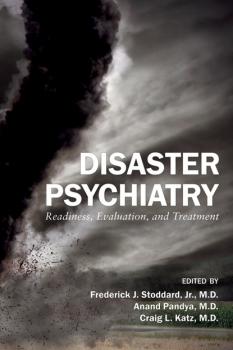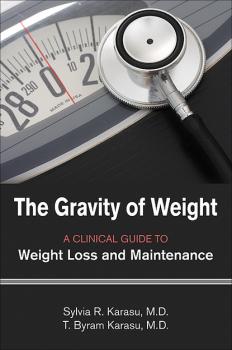ТОП просматриваемых книг сайта:
Психотерапия и консультирование
Различные книги в жанре Психотерапия и консультирование, доступные для чтения и скачиванияАннотация
With a new foreword by Nora Volkow, Director of the National Institute on Drug Abuse, this second edition of Office-Based Buprenorphine Treatment of Opioid Use Disorder provides updated information on evidence-based treatment for opioid use disorder (OUD) – an increasingly important topic as the epidemic of opioid misuse and overdose deaths grows in the United States.Bulleted clinical pearls at the end of each chapter, as well as specific clinical recommendations and detailed case discussions throughout, make it easier for readers to retain knowledge and integrate it into their clinical practice. The guide also features sample documentation and scales, including a treatment contract and a patient consent, that can be used to model documents in practice.This new edition of Office-Based Buprenorphine Treatment has been updated to reflect DSM-5 language, and two additional chapters have been included: one that addresses other pharmacotherapies useful in treating OUD, including methadone and naltrexone, and another that discusses OUD treatment specifically with regard to women's health and pregnancy.Among the numerous other revisions included in the second edition are the following: Information about new formulations of buprenorphine A discussion of the Comprehensive Addiction and Recovery Act (CARA) Changes to induction and maintenance target doses and recommendations for home inductions Information on diversion control plans Advice for working with Alcoholics Anonymous and Narcotics Anonymous A discussion on integrating buprenorphine into residential and inpatient opioid treatment programs This edition can also be used to complete the 8 hours of qualifying training required for the buprenorphine waiver. By a thorough reading of the material covered in the chapters of this book and successful completion of the posttest, physicians can meet the buprenorphine waiver training requirement.Written in a jargon-free style that does not require expertise in substance use disorder treatment, Office-Based Buprenorphine Treatment of Opioid Use Disorder is an accessible, indispensable reference for primary care physicians, psychiatrists, nurse practitioners, residents, medical students, and anyone with an interest in learning about and prescribing buprenorphine.
Аннотация
The practice of medicine is both learned and advanced through the compilation and study of cases – vignettes that record the presentation, diagnosis, and treatment of individual patients and diseases. This is especially true of psychosomatic medicine (PSM), which depends on the «compelling case» to distill clinical knowledge and communicate it to students, residents, and clinicians. An invaluable contribution to the field, the Casebook of Psychosomatic Medicine describes the psychiatric symptoms and/or illnesses managed by the PSM psychiatrist in collaboration with other medical colleagues. The book presents a broad range of cases illustrating the medical, psychosocial, and intertwined situations psychiatrists are likely to encounter in an academic medical center setting.No other single volume offers a broader range of engaging, detailed, and nuanced PSM cases, or grounds them so firmly in a psychiatric, psychosocial, and spiritual context. Here are just a few of this patient-centered book's most impressive and useful features: The relevant science underlying each case is addressed in discussion sections, allowing the book to be read as a stand-alone volume. Alternatively, the cases can be read as instructive and insightful illustrations by the reader who has already absorbed the fundamentals of PSM from standard textbooks in the field. This user-friendly book is organized by the organ system or disease type of the presenting illness or symptom. Content rare in volumes of this kind includes detailed coverage of the diagnosis and management of cognitive disorders; the management of drug toxicity states; determinations of decisional capacity for medical decision making; and «stress and adaptation», an issue the PSM psychiatrist encounters daily. The authors strongly believe that one of the most crucial roles for the psychiatrist is in the medical center, and the book reflects that orientation. The book addresses the importance of understanding the impact of patients' systemic illnesses on their psychiatric symptoms, and modifying interventions and care accordingly. These abilities are critical to sound PSM practice. Although PSM has a long and noble history, it is the newest of the psychiatric subspecialties, and as the literature expands, more and more clinicians will incorporate PSM treatment modalities into their practice. The Casebook of Psychosomatic Medicine is an essential contribution to that body of knowledge and establishes a new standard with which to face the future of this exciting field.
Аннотация
The Clinical Manual for Evaluation and Treatment of Sleep Disorders is the first clinical text devoted solely to the diagnosis and treatment of sleep disorders that is both comprehensive and conveniently portable. The book's 13 chapters offer a concise, step-by-step method of differential diagnosis for some of the most common sleep complaints encountered in today's professional clinical practices. And, unlike most other clinical textbooks, its small size gives it a broad accessibility.The manual begins with an overview of sleep physiology and pathology, including eight common laboratory procedures and three major diagnostic nomenclatures for sleep disorders. Each of the chapters that follow provides an overview of symptoms, tests, and various behavioral and pharmacologic treatments for a wide range of sleep conditions, including insomnias, breathing disorders, parasomnias, and several common medical disorders that are often associated with sleep complaints. The latter chapters discuss sleep disorders in distinct patient demographics – specifically children, women (during pregnancy, the postpartum period, and menopause) and the increasing population of older adults. The book concludes with a chapter devoted to pharmacologic interventions, detailing the use of and clinical issues associated with 25 different types of drugs.Additional benefits of the manual include: A «Pearls and Pitfalls» section of bulleted facts at the beginning of each chapter Figures, tables, and helpful takeaways (such as a differential diagnosis decision tree and patient questionnaires) in many chapters An appendix of 65 frequently used abbreviations related to sleep complaints and disorders Patient handouts that include sleep tips and information on insomnia, abdominal breathing, delayed sleep phase syndrome, melatonin and light treatments, sleep walking, and jet lag No other clinical text provides such a breadth of information on sleep disorders in such a compact, easy-to-carry volume. Its extensive content makes this book ideal for nursing, psychiatric, social work, and family practice settings, as well as a useful teaching implement in medical classrooms. By classifying sleep disorders according to clinical presentation, patient demographic, and related conditions, the Clinical Manual for Evaluation and Treatment of Sleep Disorders offers clinicians a valuable reference tool in the diagnosis and treatment of sleep disorders.
Аннотация
Mentalizing, the fundamental human capacity to understand behavior in relation to mental states such as thoughts and feelings, is the basis of healthy relationships and self-awareness. A growing evidence base supports the effectiveness of mentalizing-focused interventions in the treatment of borderline personality disorder. This volume explores wider applications, construing mentalizing as a core common factor in the effectiveness of psychotherapeutic interventions that cuts across treatment modalities and theoretical approaches ranging from psychodynamic to interpersonal and cognitive therapies.This book distills the burgeoning literature on mentalizing for clinicians of diverse professional backgrounds. The book is divided into two parts: Understanding Mentalizing fully explicates the concept of mentalizing and its foundations in developmental research and social-cognitive neuroscience; Practicing Mentalizing presents the general principles of psychotherapeutic interventions that promote mentalizing as well as a range of current clinical applications. Mentalizing is multifaceted – for example, pertaining to self and others as well as explicit and implicit processes – and links to myriad overlapping concepts including empathy, metacognition, theory of mind, mindfulness, and psychological mindedness. Two sides of research on the development of mentalizing in attachment relationships have significant clinical implications: interactions in secure attachment relationships enhance mentalizing and illuminate the conditions of optimal psychotherapeutic relationships; conversely, trauma in attachment relationships undermines the development of mentalizing and eventuates in developmental psychopathology that poses special challenges for psychotherapy. Neuroimaging is illuminating diverse brain regions that contribute to mentalizing capacity, including a «mentalizing region» in the medial prefrontal cortex that is consistently activated in mentalizing tasks; concomitantly, research on autism and psychopathy attests to the neurobiological basis of psychopathologies in which stable impairments of mentalizing are most conspicuous. In development and in psychotherapy, mentalizing begets mentalizing, as exemplified by a mentalizing stance that fosters inquisitiveness and curiosity about mental states in oneself and others; basic principles and clinical examples, including the use of transference, demonstrate the spirit and technique of mentalizing, capped off by a patient's first-hand account of mentalization-based treatment for borderline personality disorder. Attachment trauma is the wellspring of disrupted mentalizing capacity, and a focus on mentalizing provides an integrative framework for psychodynamic and cognitive-behavioral treatment of trauma as well as for parenting, family, and social-systems interventions directed toward interrupting the perpetuation of trauma in relationships. Psychoeducational interventions, including patient education and structured exercises, are employed to cultivate a therapeutic alliance around mentalizing; the book includes a straightforward explanation clinicians can use with patients, «What is Mentalizing and Why Do It?» In the chapter on mentalizing interventions, the authors propose to clinicians, «You are already doing it.» If the effectiveness of treatment depends on therapists mentalizing and helping their patients do so more consistently and skillfully, clinicians of all persuasions can benefit from the extensive knowledge now available to hone further their attention to this vital therapeutic process.
Аннотация
Many books address various aspects of ADHD – but ADHD Comorbidities: Handbook for ADHD Complications in Children and Adults is the only one that covers the multiple ways in which ADHD is complicated by other psychiatric and learning disorders in both children and adults. It features comprehensive, research-based information on the condition and its full range of comorbidities, from mood disorders to developmental coordination disorder, written by researcher-clinicians familiar with the complications that these additional disorders pose. The authors summarize in accessible language what is currently known about ADHD and its comorbidities from preschool age to adulthood, describing how ADHD produces different profiles at different stages of development.The book offers a new paradigm for understanding ADHD, viewing it not as a simple behavior disorder but as a complex developmental impairment of executive functions in the brain. In describing combinations of disorders in various age groups, this effective guide shows that significant impairments can occur in adolescence and adulthood, when individuals face increased demands for self-management. And because adults with ADHD are likely to have at least one additional psychiatric disorder at some point in their lives, this handbook also describes how to adjust treatment strategies for both ADHD and additional disorders to reduce the impairments resulting from comorbidity. Among the book's features: It reviews aspects of ADHD not only for elementary-school children, adolescents, and adults but also for preschoolers, giving ADHD developmental context by describing how symptoms in preschool years differ from those in older children Eleven chapters offer practical clinical help for patients whose ADHD appears in combination with other disorders, including aggression, mood disorders, obsessive/compulsive disorders, substance abuse, Tourette syndrome, and the autistic/Asperger's disorder spectrum. It presents guidelines for assessing and treating complicated ADHD, including psychopharmacological treatment, psychosocial treatment, cognitive therapy, and tailoring treatment to individuals and their families. It provides guidance on adapting and adjusting medications and other interventions to optimize treatment effects for the wide diversity of complex cases that embody ADHD. It contains useful information about how to discern other disorders when the chief complaint suggests ADHD – and how to detect ADHD when the patient's presentation has been modified by the presence of other disorders. With its comprehensive summaries of research and wealth of clinical guidance, this handbook clearly shows how attentional disorders are related to other conditions and how patients with these more complex variants of ADD can be more effectively recognized and treated.
Public Health Aspects of Diagnosis and Classification of Mental and Behavioral Disorders - Группа авторов
Аннотация
Public Health Aspects of Diagnosis and Classification of Mental and Behavioral Disorders: Refining the Research Agenda for DSM-5 and ICD-11 provides a comprehensive summary of the current state of mental health classification in the United States and internationally, fostering a better understanding of primary research and clinical needs and facilitating the efforts of service planners, researchers and trainees to address current use of psychiatric diagnosis in the public health sector. The volume reflects the proceedings of a research planning conference convened by the APA and World Health Organization (WHO) that focused on public health aspects of the diagnosis and classification of mental disorders. Highly relevant to the ongoing development of DSM-5 and ICD-11, the book includes the background papers prepared and presented by the Conference Expert Groups. The resulting collection: Discusses the current state of mental illness prevention efforts and the role of public health in supporting them – critical topics, given that development of effective strategies to reduce mental illness around the world depends on the accuracy with which risk and protective factors can be identified, defined, and understood. Features international perspectives on public health implications of psychiatric diagnosis, classification, and service, providing viewpoints that are broad and more globally relevant. Views mental health education, and awareness on a macro level, including its impact on social and economic policy, forensics and the legal system, and education. This approach facilitates the continued development of a research base in community health and promotes the establishment of programs for monitoring, treating, and preventing mental illness. Addresses many fascinating and clinically relevant issues, such as those raised by the concept and the definition of mental disorders and how these impact psychiatric services and practice by individual providers. This collection should prove useful to the advisory groups, task forces, and working groups for the revision of these two classifications, as well as for researchers in the area of diagnosis and classification, and more generally in public health.
Аннотация
The five-year process of preparing for the revision of the Diagnostic and Statistical Manual (DSM) has been organized around a series of conferences convened by the American Psychiatric Association, in collaboration with the World Health Organization and the U.S. National Institutes of Health, to address the future of psychiatric diagnosis. Obsessive-Compulsive Spectrum Disorders: Refining the Research Agenda for DSM-V is the fruit of one of those conferences and presents the most academically sound, thought-provoking, and timely papers from the proceedings. As the conference and book demonstrate, recent advances in psychiatric diagnosis suggest a new approach to obsessive-compulsive disorder (OCD) classification: Research into the pathogenesis of OCD increasingly supports reclassification out of the anxiety disorders and into a separate group of obsessive-compulsive-related disorders (OCRDs). The relationships among OCRDs may be better defined, delineated, and understood if the current categorical diagnostic approach is supplemented with a dimensional approach which assesses obsessive-compulsive symptom domains. Obsessive-compulsive disorders are believed to be underdiagnosed in patients who complain of broad symptoms of anxiety, and reclassification of OCD as an OCRD would promote more careful examination of distinct obsessive-compulsive symptoms, yield more accurate diagnosis, and result in more effective treatments. Reclassification may facilitate future research directions in examining the biological underpinnings of these disorders. In addition to examining the genetic, neurological, and ethno-cultural bases for OCRDs, the book gives special attention to disorders that cross current diagnostic categories, including: Body dysmorphic disorder (BDD) Tourette's syndrome and trichotillomania Impulse-control disorders The process leading to publication of DSM-V is by its nature an exhaustive and complex one, and the conferences play a critical role in reviewing relevant research, assessing the status of scientific knowledge, and advancing that knowledge base. Obsessive-Compulsive Spectrum Disorders: Refining the Research Agenda for DSM-V represents the cutting-edge thinking that will culminate in new diagnoses, classifications, and standards of practice for this debilitating set of disorders. Clinicians and academicians will be fascinated by this glimpse into the next generation of the DSM-V.
Аннотация
It is becoming increasingly common for psychiatrists to be among the first responders when disaster strikes. More than 800 psychiatrists are believed to have responded to the 9/11 attacks. The first clinical manual on the best practices for helping those affected by disaster, Disaster Psychiatry: Readiness, Evaluation, and Treatment offers an explicit and practical discussion of the evidence base for recommendations for psychiatric evaluation and interventions for disaster survivors.Disaster is defined by the World Health Organization as a severe disruption, ecological and psychosocial, that greatly exceeds a community's capacity to cope. This manual takes an «all-hazards» approach to disasters and has application to natural occurrences such as earthquakes and hurricanes; accidental technological events such as airplane crashes; and willful human acts such as terrorism. The field of disaster psychiatry is more important than ever, in response to disasters such as the Deepwater Horizon oil spill in the Gulf of Mexico and the 2010 earthquake in Haiti. Today, disaster psychiatry encompasses a wide spectrum of clinical interests, ranging from public health preparations and early psychological interventions to psychiatric consultation to surgical units and psychotherapeutic interventions to alleviate stress in children and families after school shootings, hurricanes, or civil conflict. Although disaster mental health is still a young field, research is gradually yielding methods for accurately identifying valid relationships among preexisting risk factors, postdisaster mental health problems, and effective interventions.With its practical approach to readiness, response, and intervention and its focus on evidence-based recommendations for psychiatric evaluation and interventions, Disaster Psychiatry: Readiness, Evaluation, and Treatment is an invaluable manual for educator and student alike. The manual draws on a variety of sources, including the peer-reviewed scientific literature, the clinical wisdom imparted by front-line psychiatrists and other mental health professionals, and the experiences of those who have organized disaster mental health services, including the American Psychiatric Association and Disaster Psychiatry Outreach. Each chapter provides clear and concise information and in-depth review, followed by helpful study questions and answers. This book has been developed to give professionals the knowledge they need to respond swiftly and appropriately when disaster strikes.
Аннотация
The second edition of Clinical Manual of Emergency Psychiatry is designed to help medical students, residents, and clinical faculty chart an appropriate course of treatment in a setting where an incorrect assessment can have life-or-death implications. Arranged by chief complaint rather than by psychiatric diagnosis, each chapter combines the fresh insights of an accomplished psychiatry trainee with the more seasoned viewpoint of a senior practitioner in the field, providing a richly integrated perspective on the challenges and rewards of caring for patients in the psychiatric emergency department. This newly revised edition presents current approaches to evaluation, treatment, and management of patients in crisis, including up-to-date guidelines on use of pharmacotherapy in the emergency setting; suicide risk assessment; evaluation of patients with abnormal mood, psychosis, acute anxiety, agitation, cognitive impairment, and/or substance-related emergencies; and care of children and adolescents.The editors have created an accessible text with many useful features: A chapter devoted to effective strategies for teaching, mentoring, and supervision of trainees in the psychiatry emergency service. Chapters focused on assessment of risk for violence in patients, determination of the need for seclusion or restraint, and navigation of the legal and ethical issues that arise in the emergency setting. Clinical vignettes that contextualize the information provided, allowing readers to envision applicable clinical scenarios and thereby internalize important concepts more quickly Constructive «take-home» points at the end of each chapter that summarize key information and caution against common clinical errors. References and suggested readings to help readers pursue a deeper understanding of concepts and repair any gaps in knowledge. Emergency psychiatry is one of the most stressful and challenging areas of practice for the psychiatric clinician. The guidelines and strategies outlined in Clinical Manual of Emergency Psychiatry, Second Edition, will help psychiatric trainees and educators alike to make sense of the complex clinical situations they encounter and guide them to advance their skills as clinicians and educators.
Аннотация
The Gravity of Weight: A Clinical Guide to Weight Loss and Maintenance, by Sylvia R. Karasu, M.D., and T. Byram Karasu, M.D., is a scholarly and critical inquiry into the field of overweight and obesity. Reviewing more than 900 publications, from some of the early classical papers to the most recent research, the authors have integrated the complex psychological and physiological aspects of the mind, brain, and body to explain why the control of body weight is so daunting for so many people. Written primarily for clinicians in all health-related fields, including physicians, psychologists, nurses, social workers, and nutritionists, as well as for their intellectually curious patients, The Gravity of Weight explores the controversy regarding obesity as a disease with morbidity and mortality, as well as the complex methodological issues involved in obesity research. The authors delineate the extraordinary metabolic complexities implicated in weight control as well as the importance of circadian rhythms and sleep as they relate to weight and even disorders such as the night eating syndrome. They also investigate the psychological aspects of overweight and obesity, including discrimination against the obese and the fat acceptance movement, and they discuss some of the most common diets as well as the psychotherapeutic, pharmacological, and surgical treatment options currently available for these patients.The Gravity of Weight: A Clinical Guide to Weight Loss and Maintenance is a comprehensive, multidisciplinary text that synthesizes some of the most essential information for successful weight control: The role of the environment, including diet, disordered eating, and portion control, in weight management The National Weight Control Registry and the study of those successful at weight control The importance of differentiating weight loss from weight loss maintenance The qualitative and quantitative measurements of physical activity, including the role of exercise for maintenance of weight loss The contribution of genetics to «the obesities» Depression and obesity: cause or consequence? Psychotherapeutic strategies, including cognitive behavioral therapy Medical and surgical treatment approaches and their effectiveness Drs. Karasu have drawn from both professional and personal experience to write The Gravity of Weight: A Clinical Guide To Weight Loss and Maintenance. Both had fathers who suffered from morbid obesity. One died at the age of 56, while the other lived to be 91. The authors' professional curiosity led them to question how differences in environment, genetics, and overall physical and psychological health can affect one person's longevity and another's early passing.In searching for the answers to some of the most perplexing questions regarding weight, the authors have created what is perhaps the most comprehensive exploration of the relationship of the mind, brain, body and our environment to overweight and obesity. The resulting text deserves a prominent place in the library of those who work in this field.










